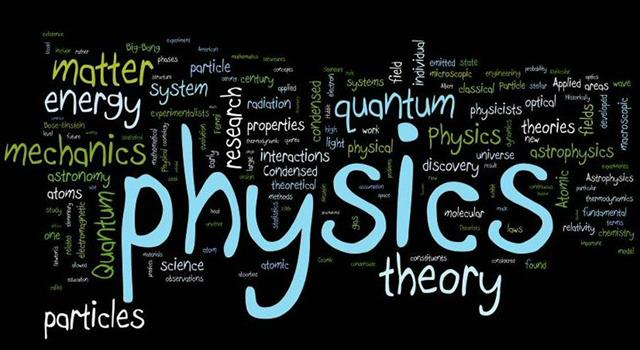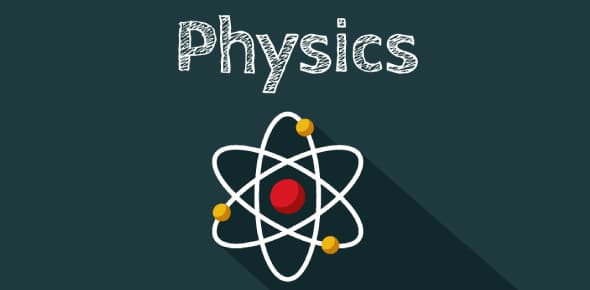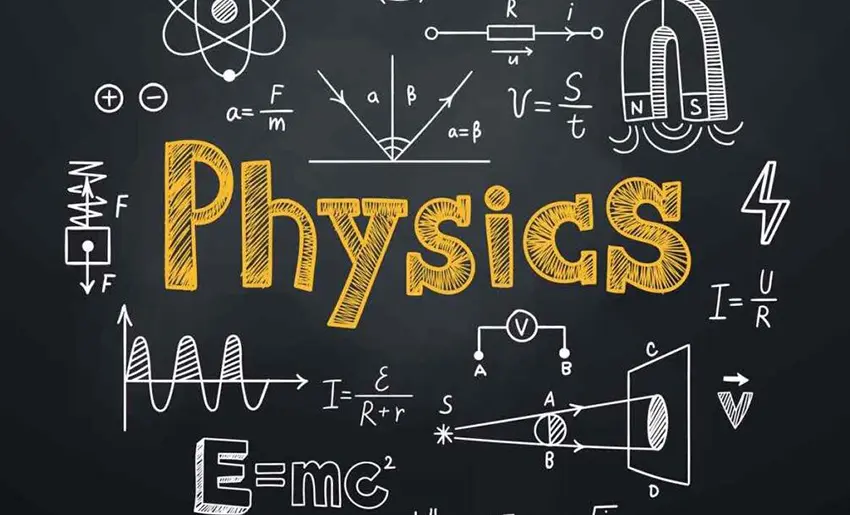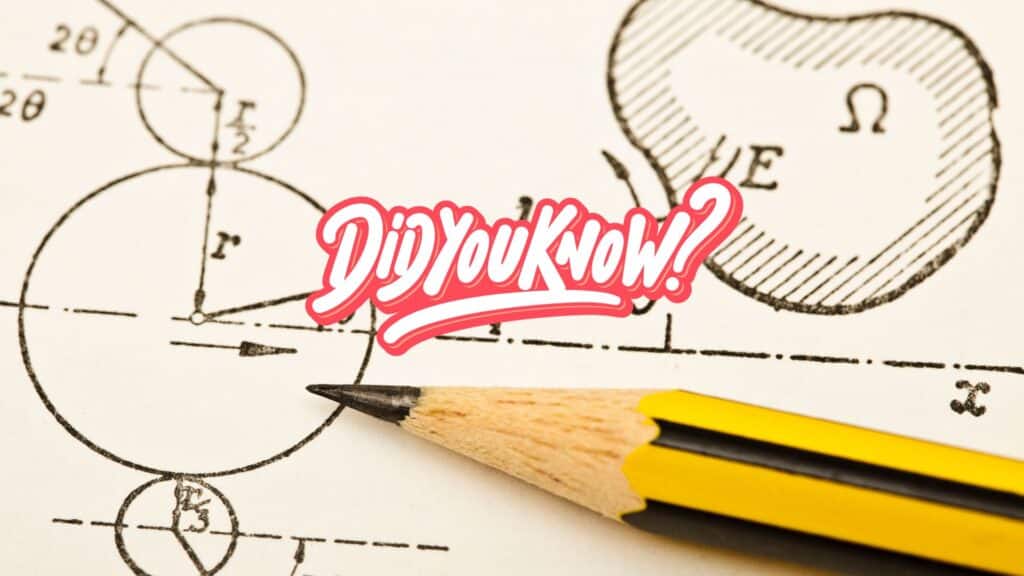Physics can seem daunting, with its complex formulas and mind-bending concepts. Many of us find it hard to grasp or remember key ideas from our science classes. But what if learning physics could be fun and engaging?
I’ve compiled a list of 327+ physics trivia questions that will test your knowledge and teach you interesting facts about our universe. These questions cover everything from basic principles to cutting-edge discoveries.
In this article, you’ll find a mix of easy, medium, and challenging questions. Whether you’re a student, teacher, or just curious about science, these trivia questions will help you learn and enjoyably remember important physics concepts.
Let’s dive in and explore the wonders of physics together!
List of Mind-Blowing Physics Trivia Facts

1. What is Newton’s first law of motion also known as?
A: the law of inertia
2. In physics, what does the acronym “SHM” stand for?
A: Simple Harmonic Motion
3. What is the SI unit of force?
A: Newton (N)
4. Who introduced the concept of center of mass?
A: Archimedes
5. What is the term for the tendency of an object to resist changes in its state of motion?
A: Inertia
6. Which law of motion states that for every action, there is an equal and opposite reaction?
A: Newton’s Third Law of Motion
7. What is the name given to the path traced by a projectile under the influence of gravity?
A: Trajectory
8. In physics, what does “g” represent in equations?
A: Acceleration due to gravity
9. What is the term for the rate of change of velocity?
A: Acceleration
10. Who formulated the law of universal gravitation?
A: Sir Isaac Newton
11. What is the SI unit of work and energy?
A: Joule (J)
12. What term describes the product of mass and velocity?
A: Momentum
13. What is the name for the point around which a body rotates?
A: Axis of rotation
14. What principle states that the total energy of an isolated system remains constant?
A: The law of conservation of energy
15. What is the term for the resistance of a fluid to flow?
A: Viscosity
16. In physics, what does “K.E.” stand for?
A: Kinetic Energy
17. What is the name for the energy possessed by an object due to its position or configuration?
A: Potential Energy
18. What is the term for the rotational equivalent of mass in linear motion?
A: Moment of inertia
19. What law states that the pressure in a fluid decreases as its velocity increases?
A: Bernoulli’s principle
20. What is the term for the maximum height reached by a projectile?
A: Apex or apogee
21. What is the term for the force that opposes the relative motion of surfaces in contact?
A: Friction
22. What is the name of the imaginary line about which a body rotates?
A: Axis of rotation
23. What is the SI unit of pressure?
A: Pascal (Pa)
24. What principle states that when a body is partially or fully immersed in a fluid, it experiences an upward force equal to the weight of the fluid displaced?
A: Archimedes’ principle
25. What is the term for the tendency of a body to maintain its state of rotational motion?
A: Angular momentum
26. What is the name for the point where the entire weight of a body may be considered to act?
A: Center of gravity
27. What is the term for the rate of change of angular velocity?
A: Angular acceleration
28. What law states that the force needed to compress or extend a spring is directly proportional to the distance of compression or extension?
A: Hooke’s law
29. What is the term for the force that acts towards the center of a circular path?
A: Centripetal force
30. What is the name for the apparent force that acts outward on a body moving in a circular path?
A: Centrifugal force
31. What is the term for the property of a body that determines its resistance to angular acceleration?
A: Moment of inertia
32. What is the name for the energy stored in a stretched or compressed spring?
A: Elastic potential energy
33. What is the term for the time taken for one complete oscillation?
A: Period
34. What is the name for the number of oscillations per unit time?
A: Frequency
35. What is the term for the maximum displacement from the equilibrium position in an oscillating system?
A: Amplitude
36. What is the name for the transfer of energy between kinetic and potential forms in an oscillating system?
A: Energy oscillation
37. What is the term for the gradual decrease in the amplitude of an oscillation due to energy loss?
A: Damping
38. What is the name for the minimum speed needed to escape a planet’s gravitational field?
A: Escape velocity
39. What is the term for the point in an orbit where an object is closest to the body it’s orbiting?
A: Perihelion (for sun) or Perigee (for Earth)
40. What is the name for the point in an orbit where an object is farthest from the body it’s orbiting?
A: Aphelion (for sun) or Apogee (for Earth)
41. What is the term for the force that resists the motion of one surface across another?
A: Static friction
42. What is the name for the force that resists the motion of a solid object through a fluid?
A: Drag
43. What is the term for the ratio of the speed of an object to the speed of sound in the surrounding medium?
A: Mach number
44. What is the name for the phenomenon where an object in a rotating frame experiences an apparent force?
A: Coriolis effect
45. What is the term for the rotational equivalent of force?
A: Torque
46. What is the name for the property of a fluid that measures its resistance to gradual deformation?
A: Viscosity
47. What is the term for the point at which the sum of all torques acting on a body is zero?
A: Center of rotation
48. What is the SI unit of electric charge?
A: Coulomb (C)
49. Who discovered the relationship between electricity and magnetism?
A: Hans Christian Oersted
50. What is the term for the force per unit charge in an electric field?
A: Electric field strength
51. What is the name of the law that relates electric current, voltage, and resistance?
A: Ohm’s Law
52. What particle carries a negative electric charge?
A: Electron
53. What is the SI unit of electrical resistance?
A: Ohm (Ω)
54. What is the term for materials that allow electric current to flow easily?
A: Conductors
55. What is the name for materials that strongly resist the flow of electric current?
A: Insulators
56. What is the term for the potential difference between two points in an electric circuit?
A: Voltage
57. What is the name of the device used to measure electric current?
A: Ammeter
58. What law states that the current through a conductor is directly proportional to the voltage across it?
A: Ohm’s Law
59. What is the term for the rate of flow of electric charge?
A: Electric current
60. What is the name of the force that acts between electric charges?
A: Coulomb force
61. Who formulated the laws of electromagnetism?
A: James Clerk Maxwell
62. What is the term for a region where a magnetic force is exerted on moving electric charges?
A: Magnetic field
63. What is the name for a material that can be magnetized and attracted to a magnet?
A: Ferromagnetic material
64. What is the term for the process of inducing a magnetic field in a material?
A: Magnetization
65. What is the name for the point where magnetic field lines converge or diverge?
A: Magnetic pole
66. What is the term for a material that weakly repels a magnetic field?
A: Diamagnetic material
67. What is the name for the phenomenon where a changing magnetic field induces a current in a conductor?
A: Electromagnetic induction
68. What law relates the induced electromotive force to the rate of change of magnetic flux?
A: Faraday’s law of induction
69. What is the term for the opposition to change in current in an inductor?
A: Inductance
70. What is the name for a device that stores electric charge?
A: Capacitor
71. What is the term for the ability of a capacitor to store electric charge?
A: Capacitance
72. What is the name for the region around a charged particle or object where it exerts an electric force?
A: Electric field
73. What law states that the total electric flux through a closed surface is proportional to the enclosed electric charge?
A: Gauss’s law
74. What is the term for the work done per unit charge to move a test charge between two points in an electric field?
A: Electric potential
75. What is the name for a device that converts mechanical energy into electrical energy?
A: Generator
76. What is the term for the process of removing electrons from an atom or molecule?
A: Ionization
77. What is the name for the flow of electric charge through a gas?
A: Electric discharge
78. What is the term for the loss of electrical energy as heat in a conductor?
A: Joule heating
79. What is the name for a device that increases or decreases AC voltage?
A: Transformer
80. What is the term for the property of a circuit that opposes changes in current?
A: Inductance
81. What is the name for the region where electric charges experience a force?
A: Electromagnetic field
82. What is the term for the energy stored in an electric field?
A: Electric potential energy
83. What is the name for the movement of charge carriers in a semiconductor?
A: Drift current
84. What is the term for the flow of electric charge without a conductor?
A: Electric current in vacuum
85. What is the name for the phenomenon where a changing electric field creates a magnetic field?
A: Electromagnetic induction
86. What is the term for the ability of a material to be polarized by an electric field?
A: Electric susceptibility
87. What is the name for the process of separating positive and negative charges in a material?
A: Dielectric polarization
88. What is the term for the opposition to the flow of alternating current in a circuit?
A: Impedance
89. What is the name for the energy carried by electromagnetic waves?
A: Electromagnetic radiation
90. What is the term for the rate at which electromagnetic energy is transferred?
A: Power
91. What is the name for the phenomenon where electric charges accumulate on the surface of an object?
A: Static electricity
92. What is the term for the tendency of electric charges to flow from a region of higher potential to a region of lower potential?
A: Electric potential difference
93. What is the name for a device that converts light energy into electrical energy?
A: Photoelectric cell
94. What is the term for the process of producing light by passing an electric current through a gas?
A: Gas discharge
95. What is the SI unit of temperature?
A: Kelvin (K)
96. What does the zeroth law of thermodynamics define?
A: Thermal equilibrium
97. What is the term for a system that doesn’t exchange matter with its surroundings?
A: Closed system
98. What is the name for the energy transferred due to temperature difference?
A: Heat
99. What is the term for the internal energy of a system plus the product of pressure and volume?
A: Enthalpy
100. What is the name for the theoretical temperature at which all molecular motion ceases?
A: Absolute zero

101. What is the term for the amount of heat required to raise the temperature of 1 kg of a substance by 1 Kelvin?
A: Specific heat capacity
102. What is the name for the process of change of state from solid to gas without passing through the liquid state?
A: Sublimation
103. What is the term for the heat absorbed or released during a phase change?
A: Latent heat
104. What is the name for the point at which a substance can exist in all three phases simultaneously?
A: Triple point
105. What is the term for the transfer of heat through the movement of fluids?
A: Convection
106. What is the name for the transfer of heat through electromagnetic waves?
A: Radiation
107. What is the term for the transfer of heat through direct contact without net movement of particles?
A: Conduction
108. What is the name for a process where no heat is exchanged with the surroundings?
A: Adiabatic process
109. What is the term for the measure of disorder in a system?
A: Entropy
110. What is the name for the heat energy required to raise the temperature of one mole of a substance by one Kelvin?
A: Molar heat capacity
111. What is the term for a process that can be reversed without leaving any trace on the surroundings?
A: Reversible process
112. What is the name for the ratio of heat provided to work done in a heat engine?
A: Thermal efficiency
113. What is the term for a hypothetical engine operating between two temperatures with maximum possible efficiency?
A: Carnot engine
114. What is the name for the energy associated with the random motion of particles in a substance?
A: Internal energy
115. What is the term for the temperature at which a pure liquid boils under standard atmospheric pressure?
A: Normal boiling point
116. What is the name for the curve showing the relationship between the pressure and volume of a fixed amount of gas at constant temperature?
A: Isotherm
117. What is the term for the temperature at which the vapor pressure of a liquid equals the external pressure?
A: Boiling point
118. What is the name for the process of converting a gas to a liquid?
A: Condensation
119. What is the term for the amount of heat required to change a unit mass of a substance from solid to liquid at its melting point?
A: Latent heat of fusion
120. What is the name for the process where a gas is compressed without heat exchange?
A: Adiabatic compression
121. What is the term for the heat capacity of a system measured at constant pressure?
A: Isobaric heat capacity
122. What is the name for the heat capacity of a system measured at constant volume?
A: Isochoric heat capacity
123. What is the term for the temperature at which the vapor pressure of a liquid is equal to standard atmospheric pressure?
A: Standard boiling point
124. What is the name for the process of a substance changing directly from a gas to a solid?
A: Deposition
125. What is the term for the energy required to separate atoms or molecules of a substance?
A: Binding energy
126. What is the name for the point on a phase diagram where all three phases coexist in equilibrium?
A: Triple point
127. What is the term for the heat absorbed or released during a chemical reaction at constant pressure?
A: Enthalpy of reaction
128. What is the name for the change in entropy of the surroundings during a process?
A: Entropy transfer
129. What is the term for a process that occurs without a change in temperature?
A: Isothermal process
130. What is the name for the phenomenon where a liquid resists solidification below its normal freezing point?
A: Supercooling
131. What is the term for the temperature at which a solid changes to a liquid?
A: Melting point
132. What is the name for the process of a liquid changing to a gas at temperatures below its boiling point?
A: Evaporation
133. What is the term for the heat required to raise the temperature of a substance by one degree without changing its phase?
A: Sensible heat
134. What is the name for the tendency of a system to resist changes in its internal energy?
A: Thermal inertia
135. What is the term for a system that can exchange both energy and matter with its surroundings?
A: Open system
136. What is the name for the process of heat transfer in solids?
A: Thermal conduction
137. What is the term for the measure of a material’s ability to conduct heat?
A: Thermal conductivity
138. What is the name for the process where a substance changes directly from a solid to a gas?
A: Sublimation
139. What is the term for the change in volume of a substance as it changes temperature?
A: Thermal expansion
140. What is the name for the phenomenon where a liquid can exist above its normal boiling point?
A: Superheating
141. What is the term for the heat absorbed or released when a substance changes from one allotropic form to another?
A: Heat of transition
142. What is the term for the minimum amount of energy that can be transferred in a physical process?
A: Quantum
143. Who proposed the concept of wave-particle duality?
A: Louis de Broglie
144. What is the name of the equation that describes how quantum states change with time?
A: Schrödinger equation
145. What principle states that it’s impossible to simultaneously know the exact position and momentum of a particle?
A: Heisenberg’s Uncertainty Principle
146. What is the term for the quantum property of particles that can be either +½ or -½?
A: Spin
147. What is the name for the quantum phenomenon where particles can affect each other instantly over any distance?
A: Quantum entanglement
148. Who proposed the Copenhagen interpretation of quantum mechanics?
A: Niels Bohr
149. What is the term for the quantum state of a system before it is measured?
A: Superposition
150. What is the name for the theoretical particle that mediates the strong nuclear force?
A: Gluon
151. What is the term for the quantum property that determines how a particle interacts with the electromagnetic field?
A: Electric charge
152. What is the name for the particle that mediates the electromagnetic force?
A: Photon
153. What is the term for the quantum property that determines a particle’s resistance to acceleration?
A: Mass
154. What is the name for the hypothetical particle that mediates gravitational force?
A: Graviton
155. What is the term for the quantum property that determines how a particle interacts with the weak nuclear force?
A: Weak isospin
156. What is the name for the particle that mediates the weak nuclear force?
A: W and Z bosons
157. What is the term for the quantum property that determines how a particle interacts with the strong nuclear force?
A: Color charge
158. What is the name for the class of particles that make up matter?
A: Fermions
159. What is the term for the class of particles that mediate forces?
A: Bosons
160. What is the name for the quantum property that distinguishes matter from antimatter?
A: Baryon number
161. What is the term for the quantum property that determines a particle’s intrinsic angular momentum?
A: Spin
162. What is the name for the quantum phenomenon where particles can tunnel through energy barriers?
A: Quantum tunneling
163. What is the term for the quantum property that determines how a particle interacts with the Higgs field?
A: Mass
164. What is the name for the particle associated with the Higgs field?
A: Higgs boson
165. What is the term for the quantum property that determines a particle’s lifetime?
A: Decay width
166. What is the name for the quantum phenomenon where virtual particles can briefly come into existence?
A: Quantum fluctuation
167. What is the term for the quantum property that determines a particle’s magnetic moment?
A: Magnetic quantum number
168. What is the name for the quantum phenomenon where a measurement affects the system being measured?
A: Observer effect
169. What is the term for the quantum property that determines a particle’s orbital angular momentum?
A: Azimuthal quantum number
170. What is the name for the quantum phenomenon where particles can behave like waves?
A: Wave-particle duality
171. What is the term for the quantum property that determines a particle’s energy levels in an atom?
A: Principal quantum number
172. What is the name for the quantum phenomenon where particles can exist in multiple states simultaneously?
A: Quantum superposition
173. What is the term for the quantum property that determines a particle’s orientation in space?
A: Magnetic quantum number
174. What is the name for the quantum phenomenon where particles can pass through each other?
A: Quantum tunneling
175. What is the term for the quantum property that determines a particle’s probability of being found in a certain location?
A: Wave function
176. What is the name for the quantum phenomenon where particles can be created or destroyed?
A: Pair production/annihilation
177. What is the term for the quantum property that determines a particle’s total angular momentum?
A: Total angular momentum quantum number
178. What is the name for the quantum phenomenon where particles can exchange properties?
A: Quantum entanglement
179. What is the term for the quantum property that determines a particle’s ability to occupy the same quantum state as another particle?
A: Spin-statistics theorem
180. What is the name for the quantum phenomenon where particles can spontaneously emit or absorb photons?
A: Quantum jump
181. What is the term for the quantum property that determines a particle’s behavior under rotations?
A: Spin
182. What is the name for the quantum phenomenon where particles can behave differently when observed?
A: Quantum Zeno effect
183. What is the term for the quantum property that determines a particle’s behavior under time reversal?
A: T-parity
184. What is the name for the quantum phenomenon where particles can exist in a superposition of different energy states?
A: Quantum coherence
185. What is the term for the quantum property that determines a particle’s behavior under charge conjugation?
A: C-parity
186. What is the name for the quantum phenomenon where particles can exhibit wave-like interference patterns?
A: Quantum interference
187. What is the term for the quantum property that determines a particle’s behavior under spatial inversion?
A: Parity
188. What is the name for the quantum phenomenon where particles can be described by complex-valued probability amplitudes?
A: Quantum amplitude
189. Who proposed the theory of special relativity?
A: Albert Einstein
190. What is the fundamental principle of special relativity that states the laws of physics are the same in all inertial frames?
A: Principle of relativity
191. What is the term for the slowing down of time in a moving reference frame?
A: Time dilation
192. What is the name for the contraction of length in the direction of motion for objects moving at high speeds?
A: Length contraction
193. What is Einstein’s famous equation relating mass and energy?
A: E = mc²
194. What is the term for the combination of space and time into a single continuum?
A: Spacetime
195. What is the name for the effect where simultaneous events in one frame of reference may not be simultaneous in another?
A: Relativity of simultaneity
196. What is the term for the addition of velocities in relativistic motion?
A: Relativistic velocity addition
197. What is the name for the theoretical speed that cannot be exceeded by any physical object?
A: Speed of light
198. What is the term for the increase in mass of an object as it approaches the speed of light?
A: Relativistic mass
199. What is the name for the phenomenon where light bends due to gravity?
A: Gravitational lensing
200. What is the term for the slowing of time in strong gravitational fields?
A: Gravitational time dilation

201. What is the name for the phenomenon where an object’s color appears to change due to its motion?
A: Relativistic Doppler effect
202. What is the term for the curvature of spacetime caused by the presence of mass or energy?
A: Gravity (in general relativity)
203. What is the name for the path followed by a particle in curved spacetime?
A: Geodesic
204. What is the term for the region around a black hole from which nothing can escape?
A: Event horizon
205. What is the name for the theoretical tunnel through spacetime?
A: Wormhole
206. What is the term for the stretching of an object as it falls into a black hole?
A: Spaghettification
207. What is the name for the theoretical faster-than-light particle?
A: Tachyon
208. What is the term for the frame of reference in which an observer is weightless?
A: Inertial frame
209. What is the name for the effect where a rotating mass drags spacetime around with it?
A: Frame-dragging
210. What is the term for the maximum amount of information that can be contained in a given region of space?
A: Holographic principle
211. What is the name for the hypothetical particle that always travels at the speed of light?
A: Luxon
212. What is the term for the theoretical object with infinite density?
A: Singularity
213. What is the name for the phenomenon where two events that are causally connected in one frame may appear reversed in another?
A: Causal disconnect
214. What is the term for the theoretical object that rotates so fast it drags spacetime with it?
A: Kerr black hole
215. What is the name for the phenomenon where light from a distant object is redshifted due to the expansion of the universe?
A: Cosmological redshift
216. What is the term for the theoretical limit to the density of information that can be contained in a given region of space?
A: Bekenstein bound
217. What is the name for the phenomenon where an object appears to move faster than light due to the expansion of space?
A: Superluminal motion
218. What is the term for the theoretical object that is its own antiparticle?
A: Majorana fermion
219. What is the name for the phenomenon where a black hole gradually loses mass over time?
A: Hawking radiation
220. What is the term for the theoretical particle that always travels slower than light?
A: Bradyon
221. What is the name for the phenomenon where the wavelength of light is stretched in strong gravitational fields?
A: Gravitational redshift
222. What is the term for the theoretical region inside a rotating black hole where closed timelike curves are possible?
A: Cauchy horizon
223. What is the name for the phenomenon where light from a moving source appears to be bunched together?
A: Relativistic beaming
224. What is the term for the theoretical object that exists in more than three spatial dimensions?
A: Higher-dimensional black hole
225. What is the name for the phenomenon where two black holes spiral into each other and merge?
A: Binary black hole merger
226. What is the term for the theoretical particle that can exist in superposition of different mass states?
A: Mass superposition
227. What is the name for the theoretical object that has negative mass?
A: Exotic matter
228. What is the term for the theoretical region where quantum effects become important in describing gravity?
A: Planck scale
229. What is the name for the phenomenon where the expansion of the universe accelerates?
A: Cosmic acceleration
230. What is the term for the theoretical object that is a solution to Einstein’s field equations representing a non-rotating black hole?
A: Schwarzschild black hole
231. What is the name for the theoretical region where general relativity breaks down?
A: Spacetime singularity
232. What is the term for the theoretical object that represents the entire history of a particle’s motion through spacetime?
A: World line
233. What is the name for the phenomenon where two particles can be entangled across vast distances in spacetime?
A: Quantum entanglement in curved spacetime
234. What is the term for the theoretical object that represents a disturbance in the curvature of spacetime?
A: Gravitational wave
235. What is the name for the phenomenon where a particle’s spin is affected by the curvature of spacetime?
A: Spin-curvature coupling
236. What is the term for the theoretical beginning of the universe?
A: Big Bang
237. What is the name for the theoretical end of a massive star’s life, resulting in a powerful explosion?
A: Supernova
238. What is the term for the region around a black hole where gravity is strong enough to prevent light from escaping?
A: Event horizon
239. What is the name for the theoretical dark, dense remnant of a star that has collapsed under its own gravity?
A: Black hole
240. What is the term for the hypothetical form of matter that does not interact with electromagnetic radiation?
A: Dark matter
241. What is the name for the hypothetical form of energy causing the accelerated expansion of the universe?
A: Dark energy
242. What is the term for the process by which stars generate energy?
A: Nuclear fusion
243. What is the name for the cloud of gas and dust from which stars form?
A: Nebula
244. What is the term for the region of space containing our solar system and nearby stars?
A: Milky Way galaxy
245. What is the name for the theoretical state of the universe in its earliest moments, when all forces were unified?
A: Grand unification epoch
246. What is the term for the theoretical end state of the universe where all matter is evenly distributed?
A: Heat death
247. What is the name for the process by which a white dwarf accumulates matter from a companion star?
A: Accretion
248. What is the term for the theoretical particle that could explain the nature of dark matter?
A: WIMP (Weakly Interacting Massive Particle)
249. What is the name for the region of space where the gravitational pull of a planet dominates?
A: Hill sphere
250. What is the term for the theoretical bridge connecting two separate points in spacetime?
A: Einstein-Rosen bridge (wormhole)
251. What is the name for the process by which a star ejects its outer layers at the end of its life?
A: Stellar wind
252. What is the term for the theoretical final state of stellar evolution for very massive stars?
A: Stellar black hole
253. What is the name for the process by which galaxies collide and merge?
A: Galactic cannibalism
254. What is the term for the theoretical phase transition that occurred in the early universe, separating the strong nuclear force from other forces?
A: Quark epoch
255. What is the name for the theoretical object composed entirely of neutrons?
A: Neutron star
256. What is the term for the theoretical limit to the mass of a white dwarf star?
A: Chandrasekhar limit
257. What is the name for the theoretical object that forms when a neutron star collapses?
A: Quark star
258. What is the term for the theoretical particle that could explain the matter-antimatter asymmetry in the universe?
A: Leptoquark
259. What is the name for the process by which a star maintains hydrostatic equilibrium?
A: Stellar nucleosynthesis
260. What is the term for the theoretical state of matter found in neutron stars?
A: Degenerate matter
261. What is the name for the theoretical particle that could explain the nature of dark energy?
A: Quintessence
262. What is the term for the theoretical end state of the universe where it collapses back on itself?
A: Big Crunch
263. What is the name for the process by which heavy elements are created in supernovae?
A: R-process (rapid neutron capture process)
264. What is the term for the theoretical object that represents the boundary of the observable universe?
A: Cosmic event horizon
265. What is the name for the theoretical particle that could explain the hierarchy problem in physics?
A: Randall-Sundrum graviton
266. What is the term for the theoretical state of matter found in the core of some massive stars?
A: Strange matter
267. What is the name for the process by which a black hole loses mass over time?
A: Hawking radiation
268. What is the term for the theoretical object that represents a rotating black hole?
A: Kerr black hole
269. What is the name for the process by which galaxies form and evolve?
A: Galactic evolution
270. What is the term for the theoretical state of the universe before the Big Bang?
A: Cosmic inflation
271. What is the name for the theoretical particle that could explain the strong CP problem in physics?
A: Axion
272. What is the term for the theoretical object that represents a charged black hole?
A: Reissner-Nordström black hole
273. What is the name for the process by which planets form from a protoplanetary disk?
A: Planetary accretion
274. What is the term for the theoretical limit to the information that can be contained in a given region of space?
A: Holographic principle
275. What is the name for the theoretical particle that could explain the nature of cosmic rays?
A: Sterile neutrino
276. What is the term for the theoretical object that represents a black hole with both charge and rotation?
A: Kerr-Newman black hole
277. What is the name for the process by which a star’s core collapses at the end of its life?
A: Core collapse
278. What is the term for the theoretical state of matter found in the early universe?
A: Quark-gluon plasma
279. What is the name for the theoretical particle that could explain the nature of inflation?
A: Inflaton
280. What is the term for the theoretical object that represents the boundary between different regions of spacetime?
A: Cosmic string
281. What is the name for the process by which galaxies emit jets of matter from their centers?
A: Active galactic nuclei
282. What is the term for the theoretical state of the universe where all matter is contained in black holes?
A: Black hole era
283. What is the term for the quantum property that determines a particle’s behavior under combined charge conjugation, parity, and time reversal?
A: CPT symmetry
284. What is the name for the theoretical framework that attempts to reconcile quantum mechanics and general relativity?
A: Quantum gravity
285. What is the term for the hypothetical particle that transmits gravitational force?
A: Graviton
286. What is the name for the theory proposing that the universe consists of multiple dimensions beyond the observable four?
A: String theory
287. What is the term for the quantum effect where virtual particles constantly appear and disappear in vacuum?
A: Quantum fluctuation
288. What is the name for the theoretical particle that is its own antiparticle?
A: Majorana fermion
289. What is the term for the quantum phenomenon where a particle’s properties are determined by its surroundings?
A: Quantum decoherence
290. What is the name for the theoretical framework that combines supersymmetry and string theory?
A: Superstring theory
291. What is the term for the hypothetical particle that could explain the matter-antimatter asymmetry in the universe?
A: Sterile neutrino
292. What is the name for the quantum effect where a particle can tunnel through a potential barrier?
A: Quantum tunneling
293. What is the term for the theoretical particle that could explain the nature of dark matter?
A: Axion
294. What is the name for the quantum phenomenon where particles can influence each other instantaneously over any distance?
A: Quantum entanglement
295. What is the term for the theoretical framework that proposes the existence of mirror particles for every known particle?
A: Mirror matter theory
296. What is the name for the quantum effect where a system’s properties change depending on how it’s measured?
A: Quantum Zeno effect
297. What is the term for the theoretical particle that mediates the strong nuclear force?
A: Gluon
298. What is the name for the quantum phenomenon where a particle’s spin is affected by its orbital motion?
A: Spin-orbit coupling
299. What is the term for the theoretical framework that proposes the universe is a holographic projection?
A: Holographic principle
300. What is the name for the quantum effect where a system’s properties are influenced by its history?
A: Quantum memory

301. What is the term for the theoretical particle that could explain the hierarchy problem in physics?
A: Kaluza-Klein particle
302. What is the name for the quantum phenomenon where a system can exist in multiple states simultaneously?
A: Quantum superposition
303. What is the term for the theoretical framework that proposes the existence of additional spatial dimensions?
A: M-theory
304. What is the name for the quantum effect where a particle’s properties are affected by its environment?
A: Quantum contextuality
305. What is the term for the theoretical particle that could explain the strong CP problem in physics?
A: Axino
306. What is the name for the quantum phenomenon where a particle’s properties are correlated with those of another particle?
A: Quantum correlation
307. What is the term for the theoretical framework that proposes the universe is constantly splitting into multiple versions?
A: Many-worlds interpretation
308. What is the name for the quantum effect where a particle’s spin precesses in a magnetic field?
A: Larmor precession
309. What is the term for the theoretical particle that could explain the nature of dark energy?
A: Chameleon particle
310. What is the name for the quantum phenomenon where a system’s properties oscillate between two states?
A: Rabi oscillation
311. What is the term for the theoretical framework that proposes the existence of supersymmetric partners for known particles?
A: Supersymmetry
312. What is the name for the quantum effect where a particle’s properties are affected by its spin?
A: Spin-statistics theorem
313. What is the term for the theoretical particle that could explain the hierarchy problem in physics?
A: Radion
314. What is the name for the quantum phenomenon where a system’s properties depend on its history?
A: Quantum hysteresis
315. What is the term for the theoretical framework that proposes the universe is a computer simulation?
A: Simulation hypothesis
316. What is the name for the quantum effect where a particle’s properties are affected by its charge?
A: Aharonov-Bohm effect
317. What is the term for the theoretical particle that could explain the nature of inflation?
A: Inflaton
318. What is the name for the quantum phenomenon where a system’s properties change abruptly at certain points?
A: Quantum phase transition
319. What is the term for the theoretical framework that proposes the existence of mirror universes?
A: Mirror matter theory
320. What is the name for the quantum effect where a particle’s spin is affected by an electric field?
A: Rashba effect
321. What is the term for the theoretical particle that could explain the nature of neutrino oscillations?
A: Sterile neutrino
322. What is the name for the quantum phenomenon where a system’s properties depend on the order of measurements?
A: Quantum non-commutativity
323. What is the term for the theoretical framework that proposes the universe is constantly creating new universes?
A: Eternal inflation
324. What is the name for the quantum effect where a particle’s properties are affected by its velocity?
A: Unruh effect
325. What is the term for the theoretical particle that could explain the nature of cosmic inflation?
A: Dilaton
326. What is the name for the quantum phenomenon where a system’s properties are affected by its geometry?
A: Geometric phase
327. What is the term for the theoretical framework that proposes the existence of a hidden variable theory?
A: De Broglie-Bohm theory
328. What is the name for the quantum effect where a particle’s properties are affected by its acceleration?
A: Dynamical Casimir effect
329. What is the term for the theoretical particle that could explain the nature of the Higgs field?
A: Higgs boson
Conclusion
Lastly, we’ve explored some amazing trivia questions covering everything from classical mechanics to modern physics. These questions not only test your knowledge but also offer a glimpse into the wonders of our universe.
Whether you’re a student, teacher, or simply curious about science, I hope these questions have sparked your interest and helped you learn something new.
So, what’s next? Why not challenge yourself to learn more about the topics that intrigued you most? Or better yet, share these questions with friends and family to spread the joy of scientific discovery.
Keep exploring, questioning, and never stop marveling at the incredible world of physics!


















